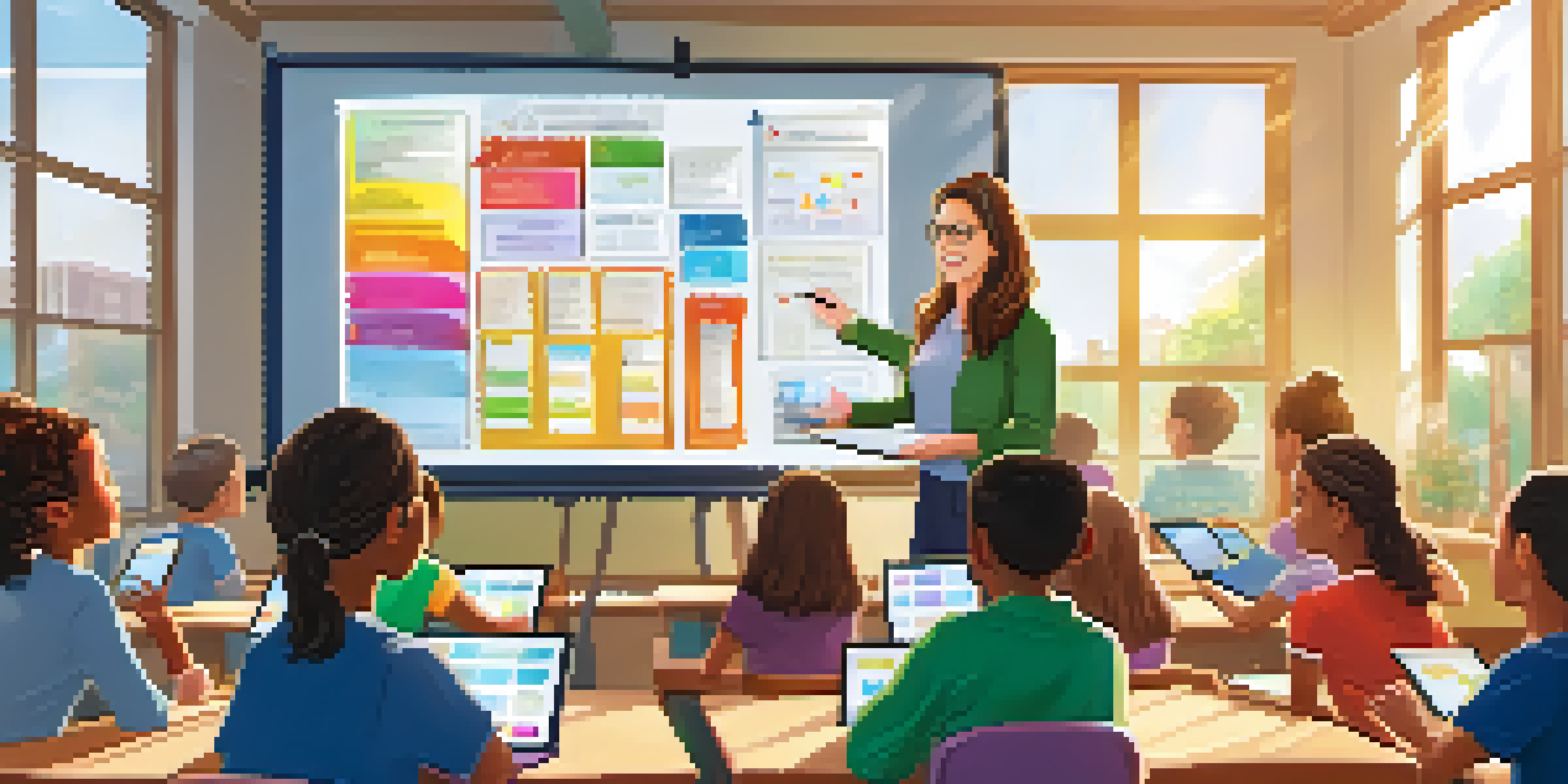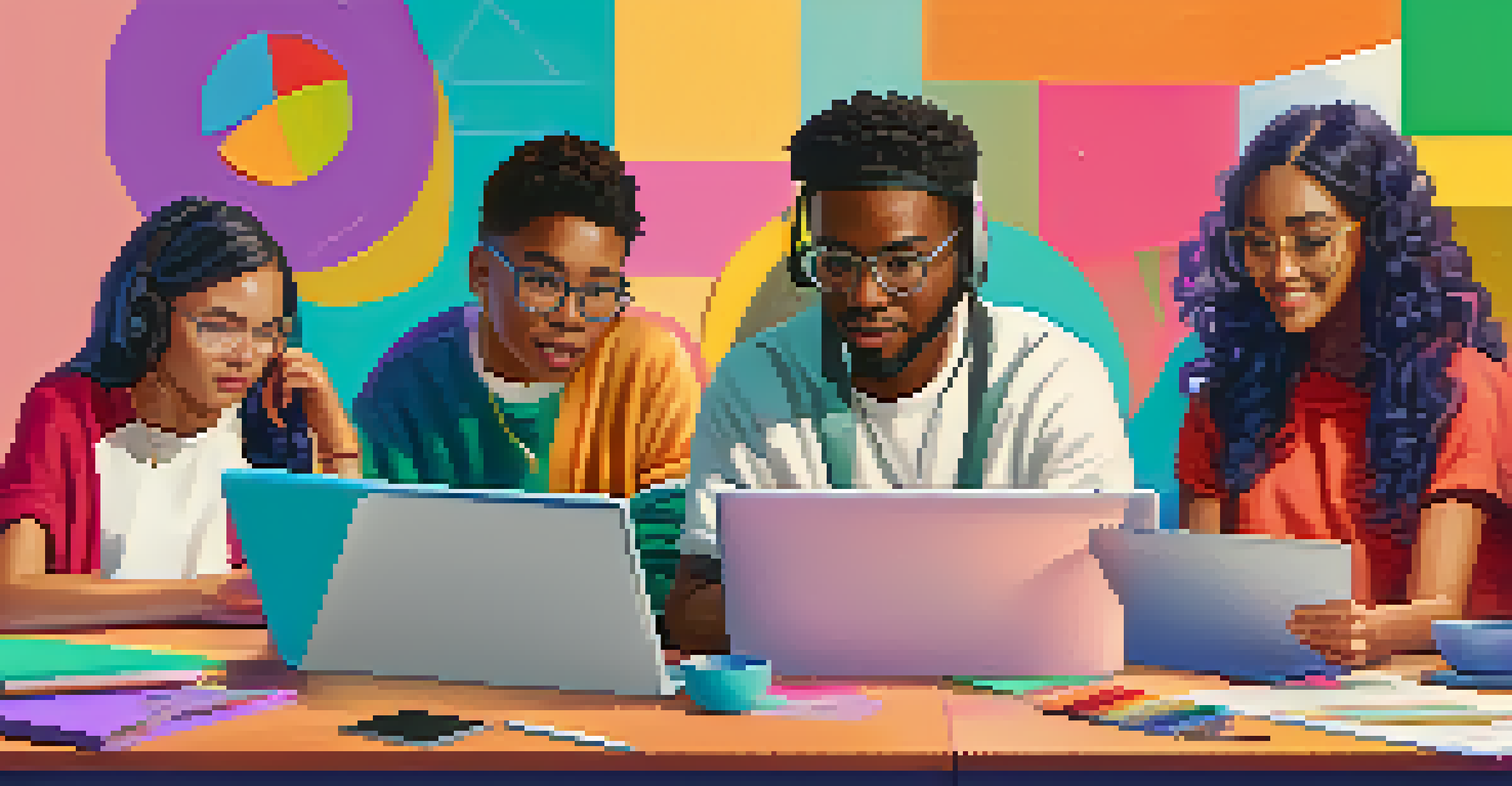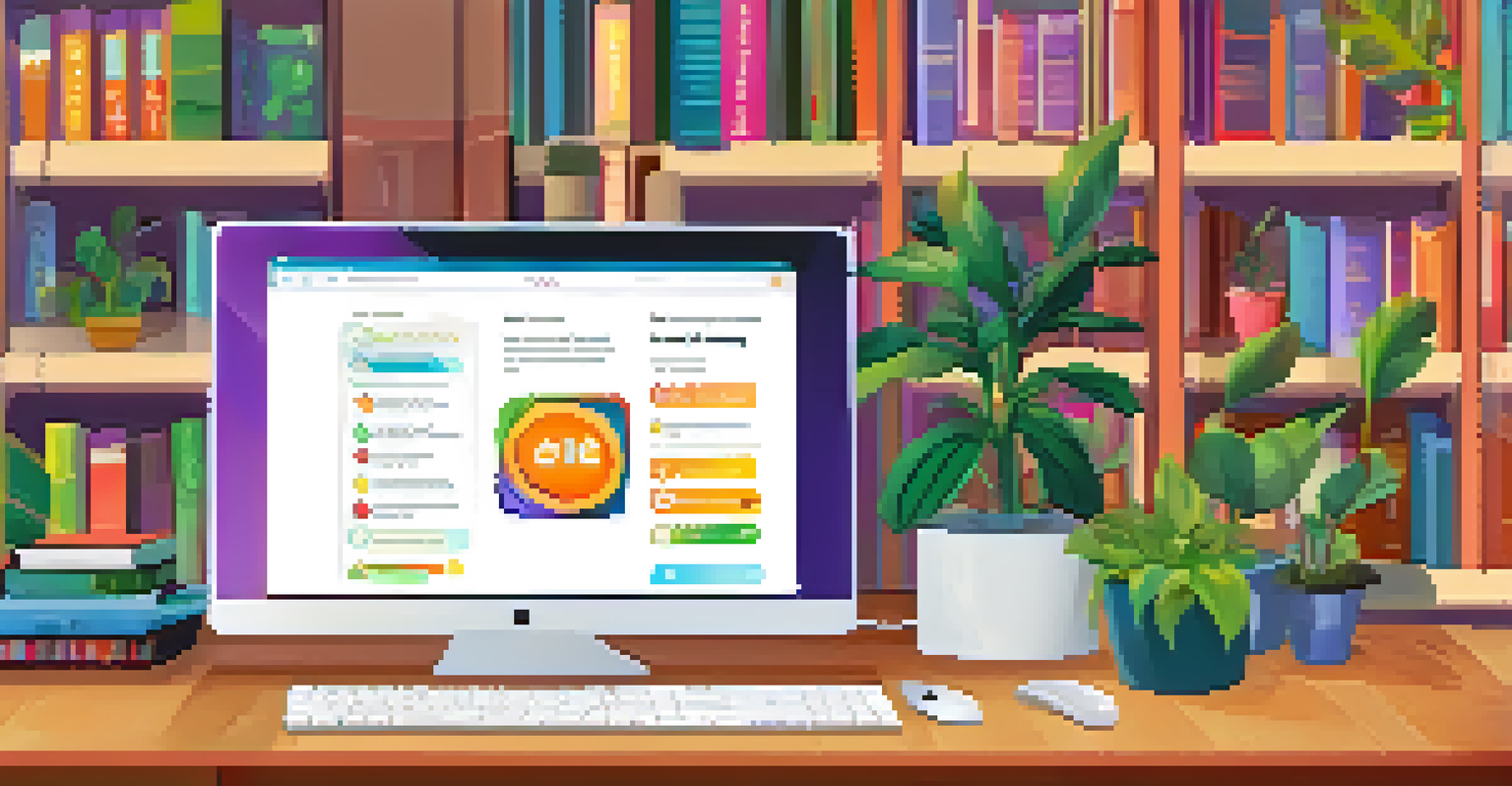Integrating Technology in Learning Experience Design Efforts

Understanding Learning Experience Design in a Digital World
Learning Experience Design (LXD) focuses on creating engaging educational experiences that are tailored to the needs of learners. With the rapid advancement of technology, LXD is evolving to incorporate tools that enhance interaction and understanding. This digital transformation is not just about using new tools but about rethinking how we approach learning altogether.
Technology will not replace great teachers, but technology in the hands of great teachers can be transformational.
By integrating technology, educators can create more immersive environments that foster collaboration and creativity. For instance, using virtual reality (VR) can transport students to historical events or scientific phenomena, making learning more tangible. This shift allows learners to connect with the material on a deeper level, enhancing retention and enjoyment.
Moreover, technology enables personalized learning paths, catering to individual strengths and weaknesses. Adaptive learning platforms, for example, use algorithms to adjust content based on a learner's performance, ensuring that each student progresses at their own pace. This customization is key to keeping learners engaged and motivated.
Choosing the Right Tools for Effective Learning Design
With so many technological tools available, selecting the right ones for your learning experience can be challenging. It's crucial to consider the specific goals of your educational program and the needs of your learners. For example, if collaboration is a priority, tools like Google Workspace or Microsoft Teams can facilitate real-time communication and teamwork.

Additionally, incorporating multimedia elements such as videos, podcasts, and interactive quizzes can cater to various learning styles. Visual learners may benefit from video content, while auditory learners might prefer podcasts. By diversifying content formats, you can ensure that you reach a broader audience.
Embrace Technology for Learning
Integrating technology into education enhances engagement, collaboration, and personalized learning experiences.
Don't forget to consider the accessibility of the tools you choose. Ensuring that all learners can engage with the content is essential in creating an inclusive learning environment. This might mean selecting tools that are compatible with screen readers or providing captions for videos.
Creating a Blended Learning Environment
Blended learning combines traditional face-to-face instruction with online elements, offering a flexible approach to education. This method allows learners to benefit from the structure of in-person classes while also enjoying the convenience of online resources. For instance, a teacher might assign online modules that students complete before discussing them in class.
The future of learning is in the hands of those who are willing to innovate and adapt.
Integrating technology into a blended learning model encourages self-directed learning. Students can review materials at their own pace, revisit challenging concepts, and explore additional resources that pique their interest. This autonomy helps build confidence and promotes lifelong learning habits.
Moreover, blended learning can enhance classroom dynamics by freeing up time for deeper discussions and hands-on activities. By managing some content online, educators can focus on facilitating engaging group work and personalized support during in-person sessions.
Fostering Collaboration Through Technology
Technology offers unprecedented opportunities for collaboration among learners, regardless of their physical location. Tools like Slack, Trello, or Padlet can help students work together on projects, share ideas, and provide feedback in real-time. This not only improves communication skills but also cultivates a sense of community.
Furthermore, virtual collaboration can expose students to diverse perspectives. By connecting with peers from different backgrounds and cultures, learners can expand their understanding and appreciation of global issues. For example, a project might involve students from various countries working together to solve a common problem.
Foster Collaboration Online
Using digital tools enables real-time collaboration, allowing students to connect and share diverse perspectives.
Encouraging collaboration through technology also prepares students for the modern workforce, where teamwork and digital communication are essential. By honing these skills in an educational environment, learners will feel more confident and equipped for future challenges.
Assessing Learning Outcomes with Technology
Assessment is a critical component of the learning process, and technology can streamline this aspect significantly. Online quizzes and surveys allow educators to gather data on student performance quickly and efficiently. This immediate feedback can help instructors identify areas where learners may be struggling.
Moreover, technology can facilitate formative assessments, which provide ongoing evaluation throughout the learning journey. Tools like Kahoot or Socrative make it easy to create interactive quizzes that engage students while gauging their understanding. This approach not only makes assessment fun but also reinforces learning in real-time.
Finally, leveraging analytics from learning management systems (LMS) can provide valuable insights into student engagement and progress. By analyzing data trends, educators can adapt their strategies and interventions to better support each learner's needs.
Enhancing Engagement Through Gamification
Gamification involves applying game-like elements to educational contexts to boost engagement and motivation. By introducing points, badges, or leaderboards, educators can create a sense of achievement and friendly competition among learners. This technique can transform mundane tasks into exciting challenges that learners are eager to tackle.
For example, platforms like Kahoot or Classcraft allow teachers to gamify quizzes and assignments, making learning more interactive. Students are often more willing to participate when they know there's a fun element involved, leading to increased retention of information.
Assess and Improve Continuously
Regularly evaluating learning strategies and incorporating feedback ensures that educational approaches remain effective and relevant.
Incorporating gamification also instills critical thinking and problem-solving skills. As students navigate challenges and strive to earn rewards, they learn to strategize and collaborate effectively, skills that are invaluable in both academic and professional settings.
Emphasizing Continuous Improvement in Learning Design
The integration of technology in learning experience design is not a one-time task but an ongoing journey. As technology evolves, so too should our approaches to education. Regularly assessing the effectiveness of your strategies and being open to feedback can lead to meaningful improvements.
Encouraging a culture of reflection among educators and learners helps identify what works and what doesn’t. By fostering an environment where feedback is valued, you can continuously refine your learning experiences to better meet the needs of your audience.

Ultimately, the goal is to create an adaptive learning environment that remains relevant and engaging. By embracing change and innovation, educators can ensure that their teaching methods resonate with today's learners, preparing them for the challenges of tomorrow.